The Best Hiking Pack I Have Ever Owned
Articles on this site contain affiliate links, meaning I may be compensated if you buy a product or service after clicking them. The full privacy & disclosure policy is here.It was definitely time for a new backpack.
I’d walked around 1300km (800 miles) on the Camino Frances and Camino Portuguese in the previous couple of years. The experiences had been incredible. My pack choices had not.
Since I was still traveling fulltime when I walked the Frances, I just used the 30-litre REI daypack I already had rather than buy something new. It wasn’t designed for long-distance walks, and although it was comfortable enough, it still eventually rubbed the skin off the small of my back.
Thirty litres was pretty tight, too. I managed to just squeeze in everything I needed, but packing every morning was a game of Tetris that I’d have preferred not to be playing at 6am.
When I went to replace it in Lisbon before my second Camino, I discovered good outdoor stores were in short supply in Portugal. I ended up with a cheap 40-litre Decathlon pack, which was a better size, but a worse backpack. Uncomfortable and sweaty, I put up with it for the three weeks of my walk, sniffed it at the end, and promptly threw it out.
As a result, I had a pretty good idea of the kind of backpack I was after. All I needed to do now was find it.
What I Was Looking For
My long-distance walks typically last between a week and a month, staying in albergues, hostels, or BnBs rather than camping. As a result, I didn’t need anything too big. I wanted the best pack for walking a Camino, not something I’d take off the grid for long periods.
The larger the pack, the higher the temptation to pack stuff I don’t need. When I’m carrying it for several hundred miles, every extra pound matters. Something around 40 litres seemed ideal, especially since packs that size might pass as carry-on luggage on most flights if I kept the weight down.
On a related note, I wanted something lightweight. I wasn’t going to be bashing through the jungle with this pack, so it didn’t need to be super heavy-duty. Long-lasting with a reasonable degree of weatherproofing, sure, but not designed to survive the apocalypse and with a weight to match.
Comfortable, adjustable straps were important, both shoulder and waist. I also wanted a useful number of places to stash snacks, water, and hiking poles for easy access. Finally, I wanted something from a manufacturer with a good reputation and warranty. This was a pack I’d likely spend a bit of money on, intending to use it for several years.
It also needed to be available in-store somewhere in London, so I could try it on, pack it full of stuff, walk around with it, and generally annoy the shop staff make sure it was right for me.
I narrowed my choices down to a few likely options, and headed into an outdoors store one rainy afternoon. Having seen many people with the Osprey Exos 38L Men's Ultralight Backpacking Backpack, Tungsten Grey, S/M on both Caminos, which looked about the right size and style, I’d figured that’s what I’d probably end up with.
As it turned out, Osprey was right in the middle of updating its Exos line. Nowhere had stock of the size I wanted. I could have waited, but since I was in the store anyway, figured I’d look at the other options.
Half an hour later, after much discussion, thinking, and repeatedly stomping up and down stairs with various heavy backpacks while muttering to myself, I walked out of the store with a different Osprey model, the Talon 44 instead. In the words of the shop assistant, “it’s just a better pack in every way.”
I wasn’t entirely convinced at the time, but after trying it out, couldn’t really find a reason to disagree. Having now owned it for five years and walked 500+ miles with it on my back, I still can’t. It’s easily the best lightweight hiking pack I’ve ever owned.
Note: Osprey has released a new version of the Talon 44 since I first wrote this review. It has an upgraded back panel and some minor fabric and color changes, but that’s about it. I borrowed one from a friend who bought the updated model: other than aesthetics, there’s little real-world difference between the two models.
Basic Features
The pack comes in two sizes: small/medium, and medium/large. The smaller version holds 42 litres, but I went for the latter. It holds the namesake 44-litre capacity, and weighs 1.3kg (2.95lbs). There are a few different colours: in the interests of hiding the most dirt, I went for boring black. No, that is not the official marketing name for that colourway.
At 69x33x26cm (27.2x13x10.2 inches), it’s over the carry-on size limit for most airlines. I’ve taken it onto a couple of flights without question, but don’t assume you’ll be able to every time. I’d expect that to be especially true when it’s crammed full of stuff and just looks heavy.
The lid of this top-loading pack can be adjusted to sit higher or lower, or removed entirely. There are two large zippered pockets, a waterproof one facing the outside, and an internal mesh version.
The main section is a single compartment, secured by a drawstring at the top. There’s also a zip at the bottom, which I’ve found more useful than expected. I keep my rain gear at the bottom of my pack, so it’s out of the way, but I can still get to it quickly when the heavens open.
There isn’t a separate sleeping bag section, but unlike many lightweight packs, there are adjustable straps at the base. These are designed for attaching a bedroll, sleeping bag, or tent that’s too bulky for the main compartment.
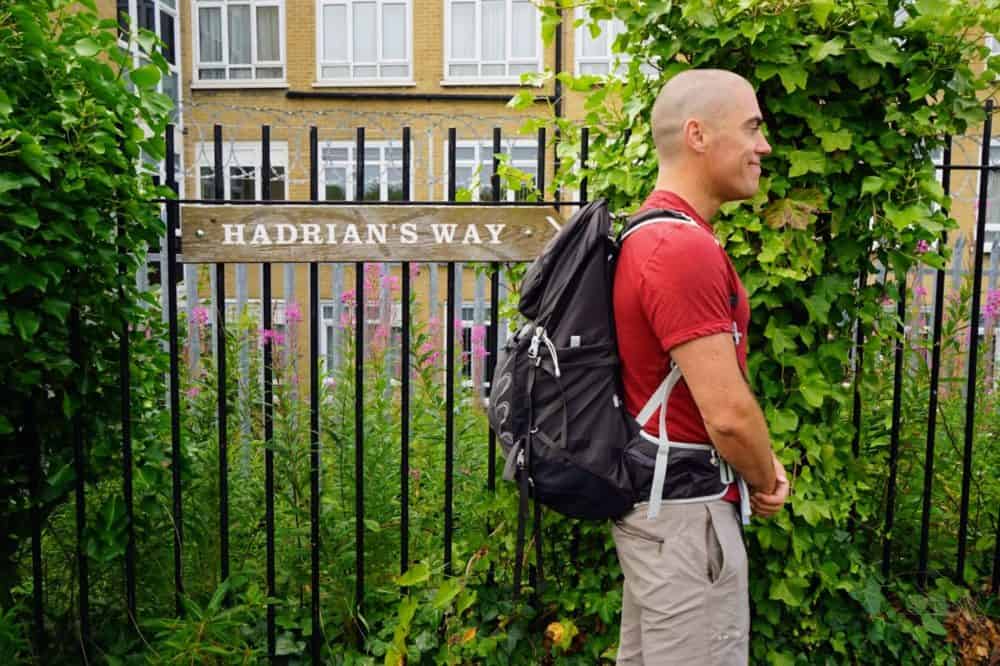
The back frame is covered in Osprey’s “AirScape” foam and a tightly-weaved mesh, to allow plenty of airflow. The frame can be moved up and down for different torso lengths, and there’s a reasonable amount of adjustment in both waist and shoulder straps as well.
That waist strap has a fair amount of padding, plus two tiny pockets for snack bars or a small phone. The shoulder straps are relatively thin, and don’t have as much padding.
There’s a mesh pocket on each side for water bottles, plus an external rear hook for a hydration bladder. A large mesh pocket at the front is ideal for stuffing discarded clothing during the day. My outer layers go in there when the sun comes out, as does my jacket after the rain stops.
The pack uses Osprey’s “Stow on the Go” system for hiking poles, where they sit on the side of the pack, underneath your arm. The idea is that you can attach and detach them quickly without removing the pack. You can — it just takes a bit of practice to remember how to do it in the moment. Or in my case, quite a lot of practice. Ahem.
Real-World Testing
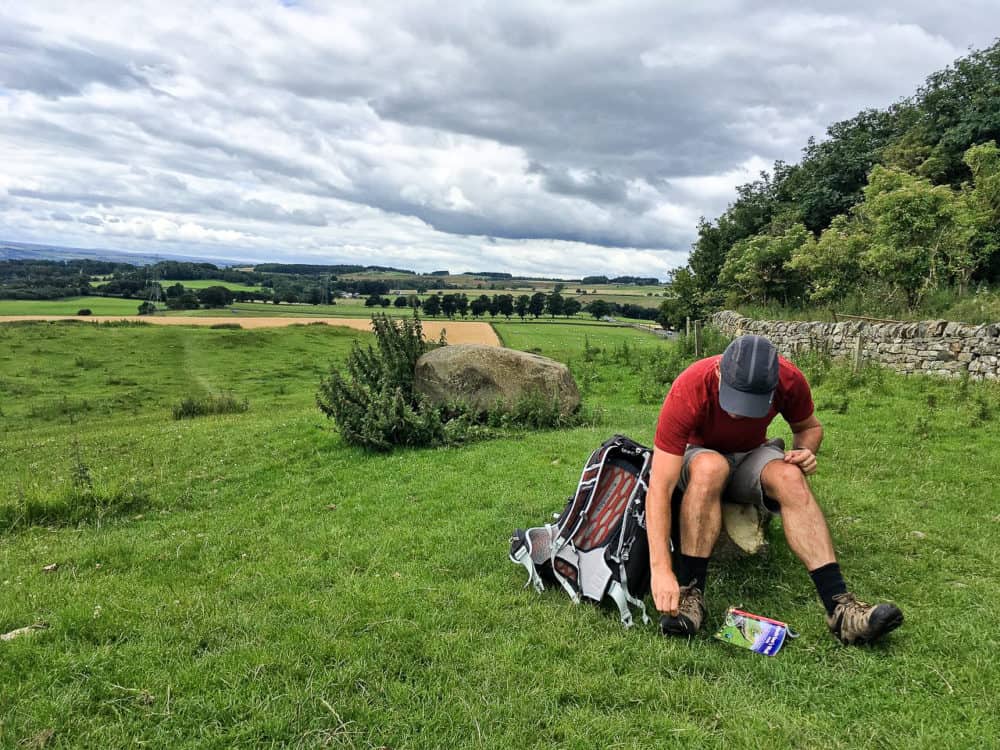
Of course, all the assurances from shop assistants are great, but the only way to really test a hiking pack is to, well, go hiking with it. So that’s what I did.
Hadrian’s Wall
The first outing came a few weeks after purchase: the Hadrian’s Wall Trail, an 84-mile walk across the north of England. It was a good test in the end, with sunshine, rain, and enough hills and long days to find out how comfortable the pack was really going to be.
Fitting everything in wasn’t a problem, helped by having to book accommodation in advance. As a result, there was no need to carry a sleeping bag, camping gear, or even much food. My full gear list is here, and with everything stowed away, I was using barely two-thirds of the space. That extra room definitely made packing and unpacking faster, and I was glad to have it.
I kept a water bottle in one of the side pockets, and my guidebook in the other. Snacks lived in the top lid, so I could quickly grab them without having to open up the main section.
I had some doubts after the first day, when my hips felt a little bruised from the waist strap. I’m pretty sure I’d just cinched it too tight the day before, as loosening it off a little made the pain go away without seeming to transfer any extra weight to my shoulders.
Despite the apparent lack of padding, the harness was comfortable the entire time. I was only carrying around 8kg (18lbs) though — this walk, like all of the others I’ve done and plan to do with this pack, didn’t require much gear.
It doesn’t ever get seriously hot in the north of England, but it did get up to the mid-20’s C (mid-70’s F) on the final day of the walk. Even then, there was enough airflow between my body and the pack to prevent most of the back sweat.
Pulling the water bottle out of a side pocket mid-stride was easy, but getting it back in usually meant stopping or asking my hiking partner to do it. That’s a problem with many packs, and this was no exception. It’s far from the end of the world, but still, a minor niggle.
I had a poncho which covered both me and the pack when the weather really set in, but it handled a bit of rain just fine. Nothing on the inside got damp, even after an hour of light drizzle.
Cotswold Way
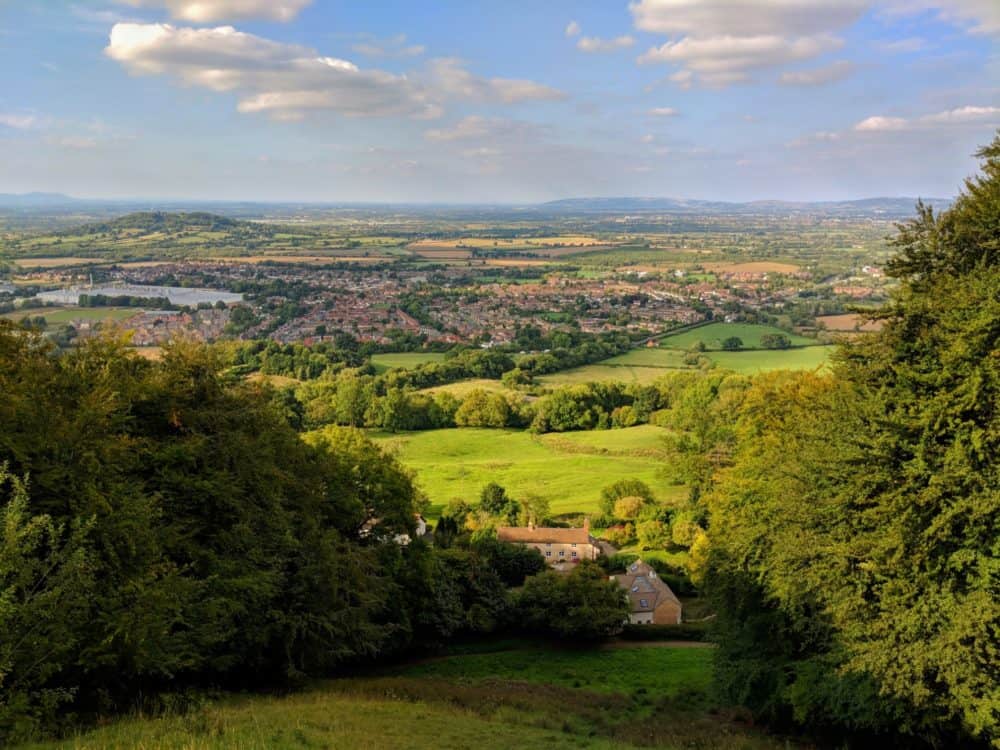
Happy with the way the pack performed on that hike, I used it again around a year later to walk the Cotswold Way. At 102 miles, it’s slightly longer than the Hadrian’s Wall Trail, but probably a little easier overall. Little of the route is on roads or hard pavements, and the few hills aren’t anything to get concerned about.
Since it’s such a popular walk, and accommodation options are largely limited to BnB’s, pubs, and hotels anyway, we’d again had to book in advance. That meant no sleeping bag or camping gear once more, and a pack weight of 7-8kg yet again.
One thing that was different this time was choosing to take a hiking pole. I’ve been having minor pain in one of my knees after long descents in recent years, and since I’d bought a pole for a previous walk anyway, figured I might well use it.
As I mentioned earlier, that “Stow on the Go” system takes a bit of getting used to, and I wasn’t at all convinced the first couple of times I tried to use it. Eventually I remembered how it was meant to work, though, and was able to quickly stash the pole on flat sections without breaking stride, then retrieve and start using it again when coming to a steep bit.
South Downs Way
Skip forward another year, and it was time to walk the South Downs Way. Another one of the 100-odd mile national trails that Britain is so good at providing, there was no real question about which pack I’d take with me.
I took a pair of hiking poles with me this time rather than just one, which was the only real addition to the gear I was carrying. There was more than enough room in the elastic loops to comfortably stow both poles, and as long as I then cinched the loops nice and tight, the poles didn’t slide around much at all.
There were some long days on this walk, up to 22 miles on one particularly memorable (and grueling) day, but both the pack itself and my back and shoulders came through them unscathed. My feet not so much, but I can’t blame the pack for that, only my over-ambitious planning.
Camino Primitivo
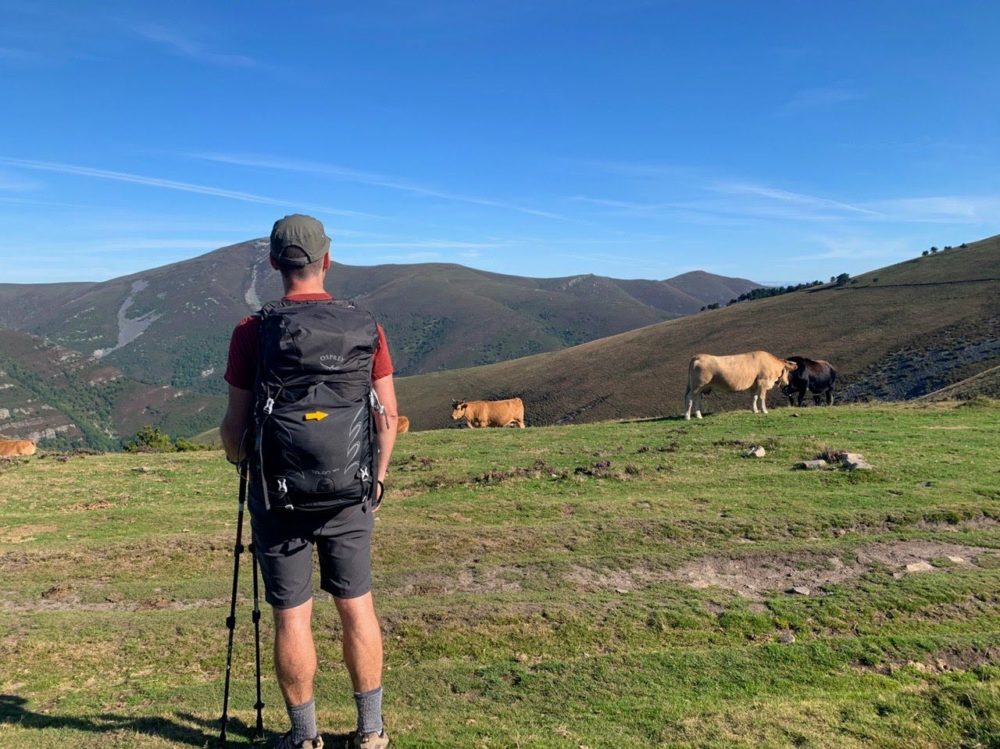
Skip forward a few months, and it was time to walk the Camino Primitivo. At around two weeks and 200 miles, this would be the longest walk I’d done with this backpack, but based on how well it had performed on my previous long-distance hikes, I had no concerns about whether it’d be up to the job.
I walked up and down mountains, in everything from rain and fog to hours-long slogs in the Spanish sunshine, and as far as the pack’s concerned, I have nothing to report. Despite it being a longer walk, often in hotter temperatures, I had no problems with rubbing or chafing, and didn’t notice any wear or damage at the end.
Having finally tired of messing around with a water bottle, this was the hike where I finally decided to switch it out for a hydration bladder instead. I opted for a cheap one I found in an outdoor store somewhere, while my girlfriend (who’s clearer smarter than me) went for the Osprey-branded version instead.
Suffice it to say that while I really enjoyed the ease of using a bladder, I didn’t enjoy the continual leaking of that particular model. As soon as I got home, I switched it out for the same two-litre Osprey version that my girlfriend used, which works a lot better and hasn’t failed me since.
Apparently sometimes it’s just worth spending the extra money on quality the first time. Who knew?
Other Multiday Walks
The pandemic put a bit of a dent in my hiking plans for a while, but I pulled this backpack out of storage the first chance I had, and used it on another two long-ish walks in 2023.
It’s still going as strong as ever, first on the Wicklow Way, a very soggy week-long wander through the Irish countryside, and then the five-day St James’ Way in the south of England a couple of weeks later.
Pack-wise, there’s not a lot to report from either of them. I’d decided to take a waterproof jacket instead of a poncho on these walks, mostly so I could wear it in the evenings without looking even more ridiculous than usual. That meant I needed some way of keeping the rain off the backpack.
In the end I just used the pack cover that was included with my Osprey Atmos 65 AG. It’s definitely too big for it, but I found that if I cinched the drawstring tight enough, it stayed firmly attached even when I was caught in howling wind and rain at the top of an Irish mountain.
If you don’t have a spare pack cover floating around, Osprey sells a medium-sized one that fits packs like the Talon 44 properly, and comes with a little zippered bag to store it in when you’re not using it. If my larger version does eventually blow away down a mountain, that’s what I’ll be replacing it with.
Weekend Trips
As well as those half-dozen longer walks and the odd day hike with the Talon 44, I’ve also used it as general luggage for a few short trips away. It’s fine for a long weekend, since it easily fits several day’s worth of clothes and other miscellaneous stuff inside.
Even so, it’s still small enough to fit in the overhead luggage compartment on buses and trains, and doesn’t take up much room in the boot/trunk of a car either. Because it’s a lightweight hiking pack, though, it doesn’t have the extras like a laptop compartment or padded pockets that you get with travel-specific bags and cases.
As a result, and because it’s just that little bit too big to be sure it will be allowed as carry-on, it’s not usually my first choice for trips where I won’t be doing any real hiking. If I will, though, it’s flexible enough to pack everything I need for a few days away somewhere, go hiking all day with it while I’m there, and then take everything back home in it at the end.
Verdict
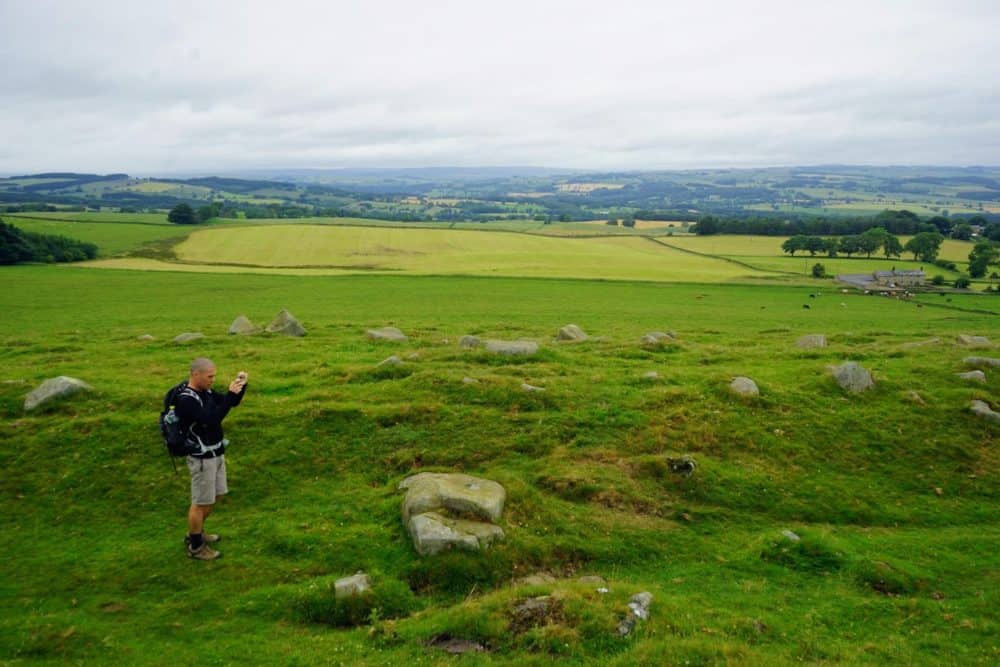
I had high expectations from this pack, or indeed any pack that costs that kind of money. Knowing I could walk for a month with a general-purpose daypack, or a budget pack that costs a third as much, would the Osprey Talon 44 really be worth the extra cost?
Over seven hundred miles later, the answer is yes. It’s lighter and far more comfortable than either of those other options, big enough to store everything I need for the kind of hikes I do, while still being small enough to stow in the overhead locker if the flight attendants aren’t looking too closely.
Before purchase, I was a bit worried there wasn’t enough padding on the shoulder straps. I’ve had no problems even on 36km (22 mile) days, at least with the amount of weight I carry.
The pack can easily handle as much rain as I can before getting a jacket out. There are enough pockets and attachments for the things I need to regularly access. It doesn’t smell, and has shown no signs of wear so far. If it does break, there’s a lifetime warranty against defects.
It’s not an “everything” pack, though. Does that even exist? It’s not really big enough for a week-long backcountry hike, for instance, where you’re carrying all your gear and food. I use the Osprey Atmos 65 AG that I mentioned earlier for those kind of hikes.
While it’s also fine for day walks, given the choice you’d probably go for something a bit smaller unless you needed to carry a bunch of technical gear.
For what I use it for, however, the Talon 44 is ideal. Other than that minor hassle of stashing the water bottle while walking, I really can’t fault it. It’s performed flawlessly on every hike I’ve used it for, and years after I bought it, there’s no indication it won’t keep doing so for many hikes to come.
I can’t wait to find out.

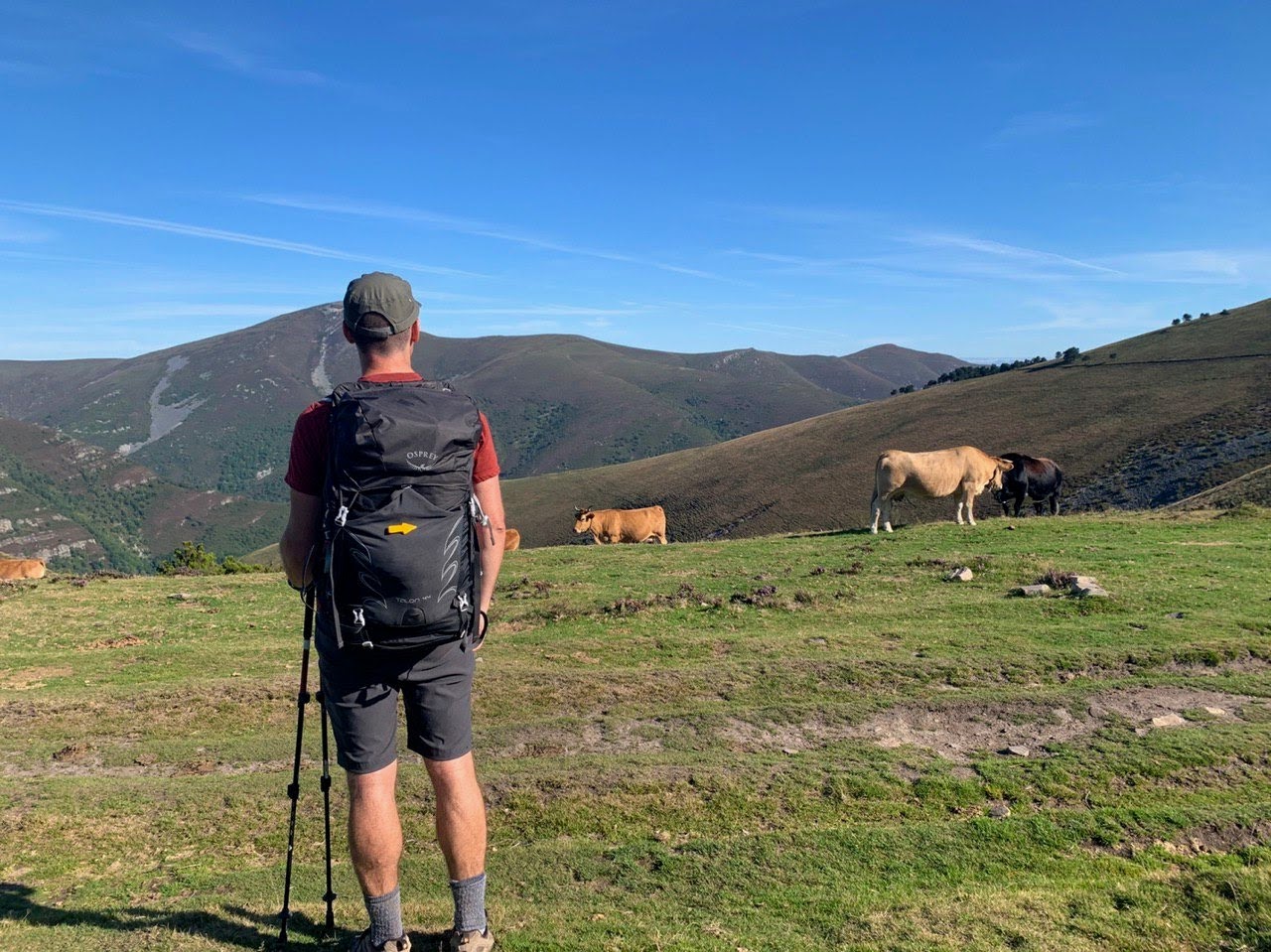
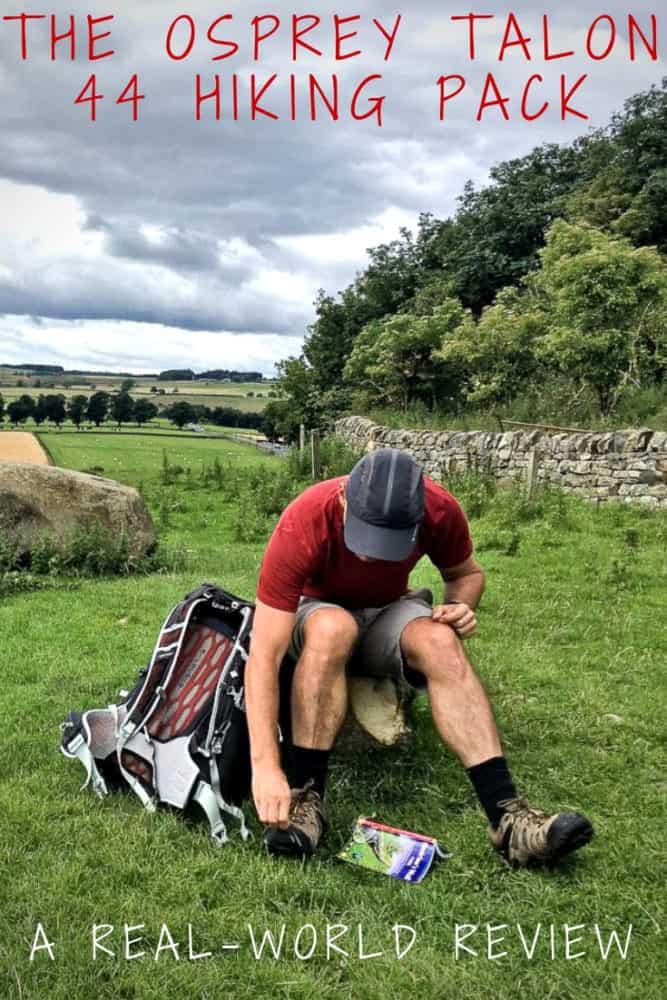
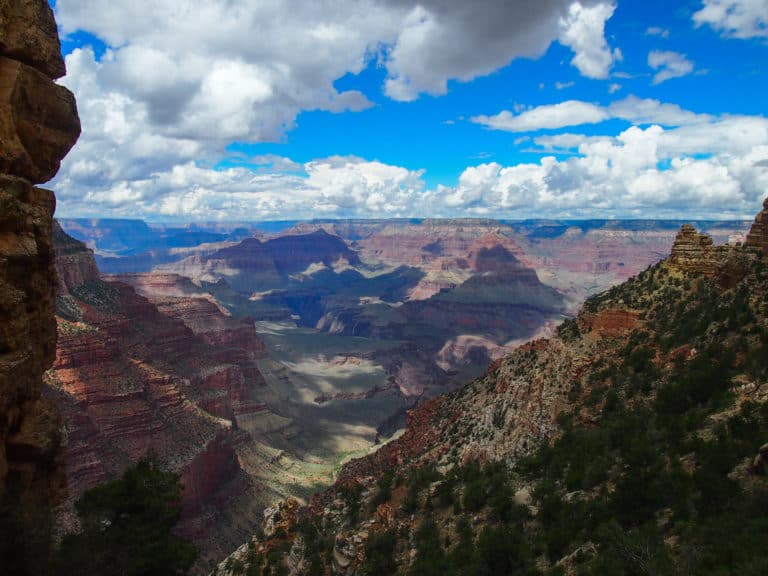
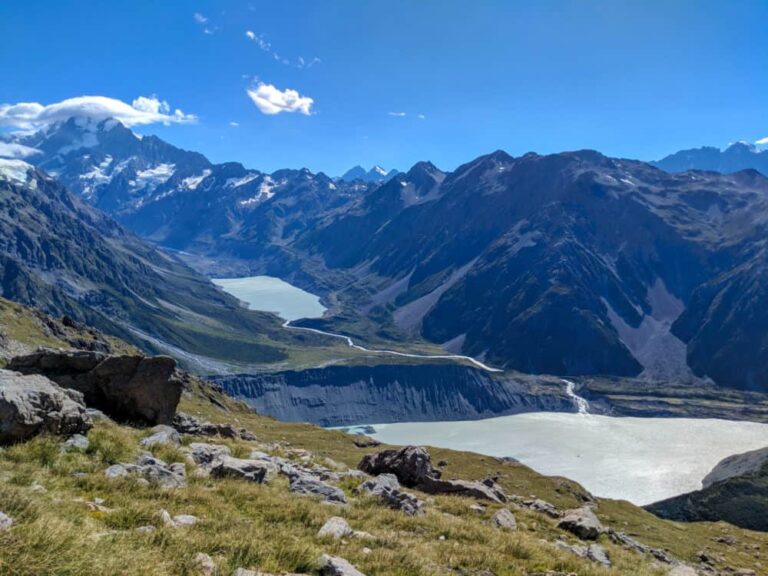
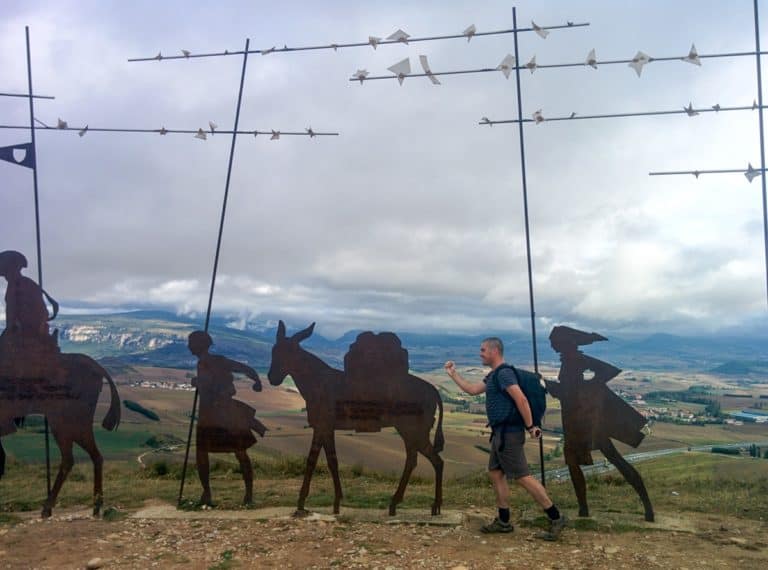
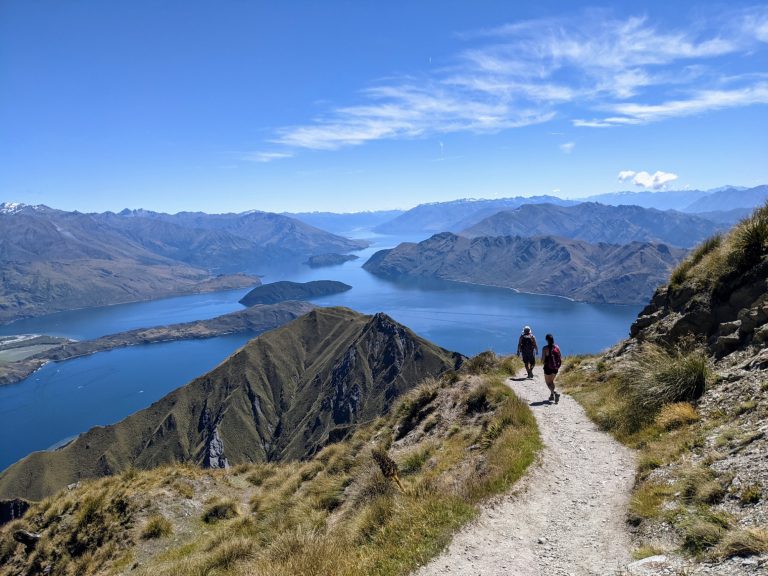
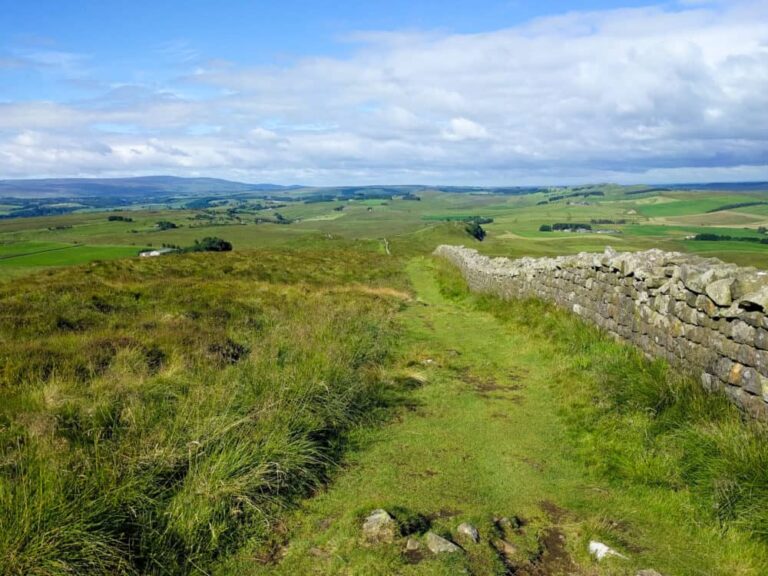
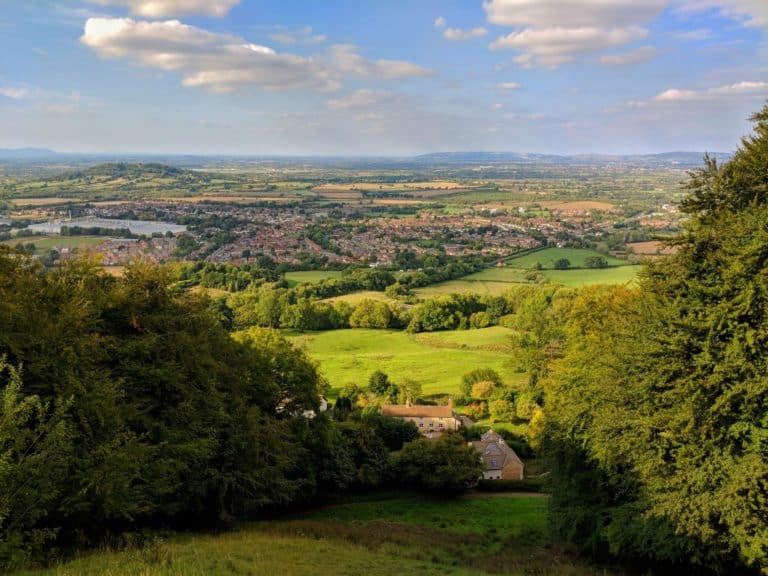
So, this is the pack to get for the Camino!
I’ll know for sure after walking the Primitivo towards the end of the year, but I suspect so!
Tossing up between this and the 33l (predominantly for long day hikes but it would be nice to have the option for overnighters). Does the 44l feel unnecessarily big for the former?
Probably a little, although it wouldn’t be the end of world – it collapses down a bit when it’s not very full. Even so, I usually end up using an old 25 litre day pack on most day hikes and the 44 for overnighters, unless I need to carry a bunch of wet weather gear on the day hike as well.
I love my Talon 44 too but I really want to attach a bigger shoulder pocket to the strap for a water bottle. That’s the only downside of this pack for me. Not enough attachment points on the straps.
Yeah, I hear you. I’ve now switched to a bladder/reservoir system instead of carrying water bottles in the side pockets, because it was too annoying to try and put them back in again after I’d taken a drink. Attaching a pocket to the strap would probably have solved the problem as well, but as you say, the lack of attachment points makes that difficult if not impossible to do.
Thanks for this! I’ve been looking at the women’s version (the temprest) and this has helped made my decision. ????
thanks for the review! Id like to ask which torso size of this talon pack you have? and how tall you are. Thanks!
Hi Ronnie,
I mentioned in the post that I went for the M/L torso size — I’m 5’9″ (175cm).